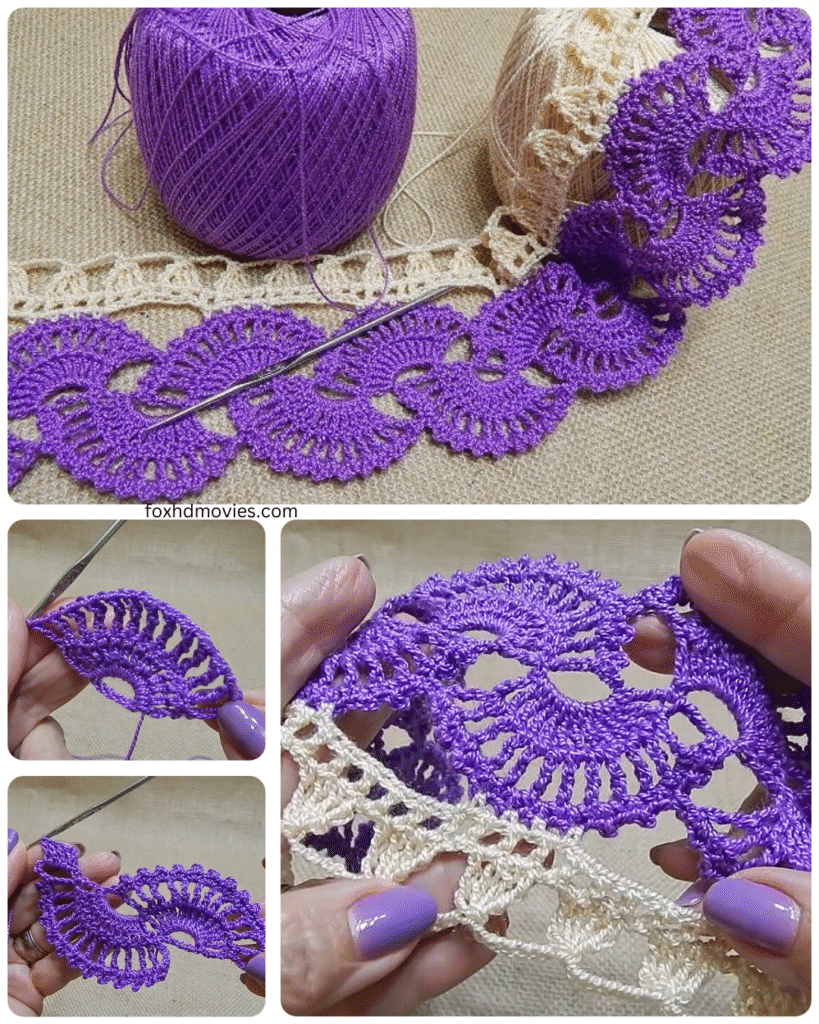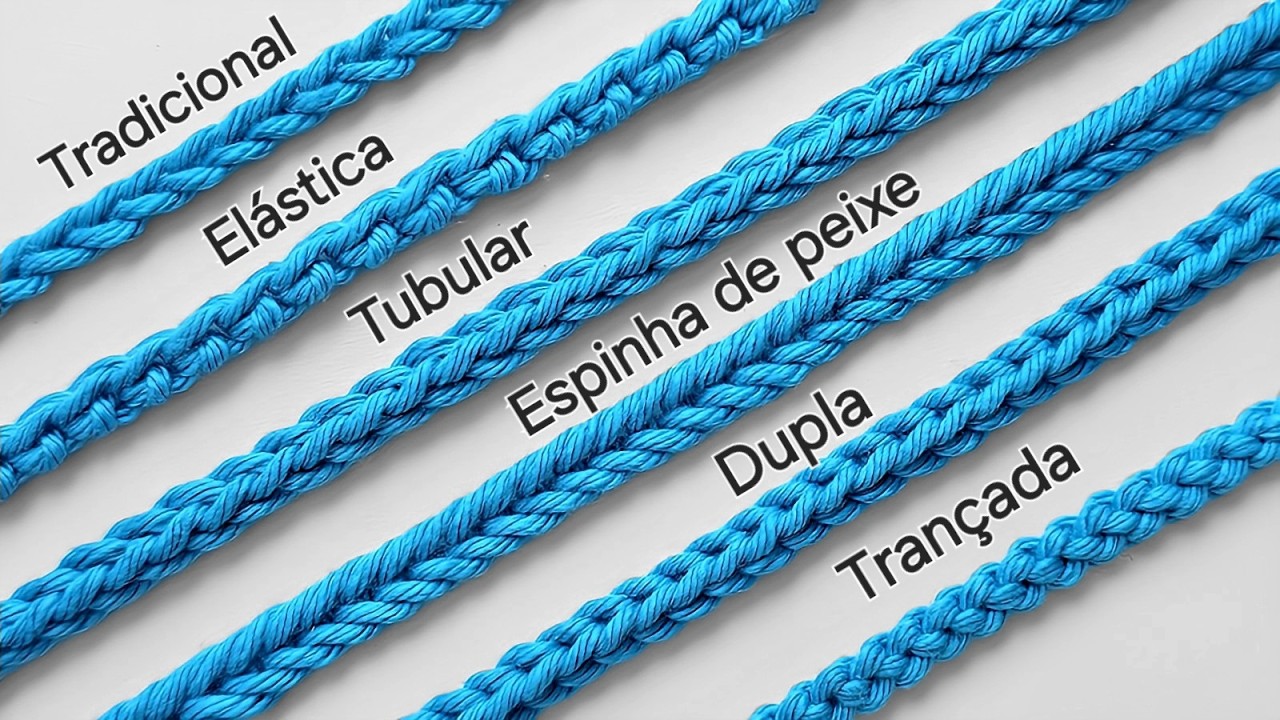
Hello, color-loving crafters! Are you ready to add a vibrant twist to the delicate beauty of lace crochet? Today, we’re diving into the enchanting world of Two-Color Lace Crochet, where the interplay of hues can elevate the intricate patterns to a whole new level of visual delight.
This technique allows you to highlight specific elements of your lace design, create striking contrasts, or even blend colors for a subtle gradient effect. While it might seem a bit more involved than working with a single color, the fundamental crochet skills remain the same. With a little planning and careful execution, you’ll be crafting stunning two-toned lace pieces in no time.
So, gather your favorite pair of contrasting or complementary yarns, your trusty hook, and let’s explore the captivating possibilities of two-color lace crochet!

What You’ll Need:
- Two Colors of Fine Crochet Thread or Yarn: Choose two colors that work well together. Consider contrast for bold statements or similar shades for a more blended look. Ensure they are of the same weight and fiber content for consistent tension. The amount will depend on your project size.
- Small Crochet Hook: Select a hook size appropriate for your chosen yarn or thread.
- Scissors: For snipping your yarn.
- Yarn Needle: For weaving in ends neatly.
- Stitch Markers (optional but helpful): To mark specific stitches or pattern repeats, especially when changing colors.
- Blocking Pins and Board (optional): For shaping and setting your finished lace.
- Your Chosen Lace Pattern: This tutorial will focus on the technique of two-color crochet within a lace pattern. You’ll need a specific lace pattern you want to adapt for two colors. This could be a simple repeating motif or a more complex design.
Understanding the Dance of Two Colors:
The key to successful two-color lace crochet lies in clean color changes and managing your yarn tails. Here are a few common approaches to incorporating a second color:
- Alternating Rows/Rounds: The simplest method, where you work entire rows or rounds in one color and then switch to the other. This creates clear horizontal or circular stripes.
- Highlighting Motifs: Use one color for the main body of the lace and the second color to accent specific elements like picots, chains, or raised stitches within the pattern.
- Creating Borders or Edges: Employ one color for the central lace fabric and another for a contrasting border or edging.
- Intarsia or Small Blocks of Color: For more intricate designs, you might work with small blocks of each color within a row or round, similar to tapestry crochet. This requires careful planning and managing multiple yarn strands.
Video tutorial
Let’s Illustrate: Adapting a Simple Lace Pattern for Two Colors
For this blog post, let’s imagine we’re adapting a very basic lace repeat: (ch 3, skip 1 sc, sc in next sc). We’ll demonstrate how to work this in two colors using the alternating rows method and then explore how to highlight motifs.
Example 1: Alternating Rows
Let’s say Color A is Teal and Color B is Cream.
- Foundation Chain: Using Color A, chain the number required by your chosen lace pattern.
- Row 1 (Color A): Work the first row of your lace pattern using Color A. For our example: ch 3, skip 1 sc, sc in next sc; repeat across. Turn.
- Row 2 (Color B): At the end of Row 1, drop Color A (do NOT cut unless instructed by your specific pattern). Join Color B with a slip stitch into the last stitch of Row 1. Chain the required turning chain for Row 2. Work Row 2 of your lace pattern using Color B. For our example: ch 3, skip 1 sc, sc in next sc; repeat across. Turn.
- Row 3 (Color A): At the end of Row 2, drop Color B. Pick up Color A and slip stitch into the last stitch. Chain the required turning chain. Work Row 3 of your lace pattern using Color A. Turn.
- Repeat Rows 2 and 3, alternating colors for each row, until your piece reaches the desired size.

Important Considerations for Alternating Rows:
- Neat Color Changes: When switching colors at the end of a row, try to keep your yarn joins neat and secure. You can often carry the unused yarn loosely up the side of your work if you’re changing colors every row, but be mindful of it showing through. For more significant color changes, it’s usually better to fasten off and rejoin.
- Turning Chains: Remember to use the correct turning chain for the stitch you’ll be working in the new color.
Example 2: Highlighting Motifs
Let’s adapt our simple lace repeat to highlight the chain-3 loops in Color B.
- Foundation Chain: Using Color A, chain the number required by your chosen lace pattern.
- Row 1 (Color A): Work the first row of your lace pattern using Color A: ch 3, skip 1 sc, sc in next sc; repeat across. Turn.
- Row 2 (Color A): Work the next row of your lace pattern using Color A. For our example, this might involve single crocheting into the chain spaces and single crochet stitches of the previous row. When you reach a point where you need to chain 3 for the loop, drop Color A.
- Working the Highlight (Color B): Pick up Color B. Chain 3. Drop Color B. Pick up Color A and continue with the next stitch in the pattern.
- Continue: Continue working the row in Color A, switching to Color B whenever you need to create a chain-3 loop.
- Subsequent Rows: Follow your lace pattern, switching colors as needed to keep the chain-3 loops in Color B. You’ll need to carefully manage both yarn strands as you work.

Tips and Techniques for Two-Color Lace:
- Plan Your Color Placement: Before you begin, sketch out your design or carefully read your pattern to decide where you want each color to appear. This will help you visualize the final outcome and plan your color changes.
- Manage Your Yarn Tails: When you change colors, you’ll have new yarn tails to weave in. Leave a reasonable length (around 6 inches) to make weaving easier and more secure.
- Weaving in Ends: Weave in your ends carefully and securely on the wrong side of your work. For lace, try to weave them along existing stitches to make them less noticeable.
- Consider Yarn Thickness: Ensure your two colors of yarn have a similar thickness to maintain consistent stitch size and overall fabric texture.
- Practice Makes Perfect: Don’t be discouraged if your first attempt isn’t flawless. Two-color crochet requires a bit of coordination, so practice with a simple pattern to get comfortable with the color changes.
- Use Stitch Markers: If your pattern has complex repeats or you’re working with small blocks of color, stitch markers can be invaluable for keeping track of your place and ensuring accurate color placement.

Unleash Your Creativity: Project Ideas for Two-Color Lace
The possibilities for two-color lace are as vast as your imagination! Here are a few ideas to get your creative juices flowing:
- Edgings and Trims: Create eye-catching borders for blankets, scarves, garments, and home decor items.
- Bookmarks: Craft delicate and colorful bookmarks with contrasting lace patterns.
- Doilies and Coasters: Design intricate doilies or coasters where the second color highlights the central motif or the outer edge.
- Appliqués and Embellishments: Crochet small lace motifs in two colors to add unique details to bags, hats, or clothing.
- Jewelry: Fashion delicate lace earrings or pendants with a touch of contrasting color.
- Shawls and Scarves: Create stunning two-toned lace shawls or scarves where the colors blend or create bold stripes.
Blocking Your Two-Color Lace:
Just like single-color lace, blocking is crucial for opening up the stitches and showcasing the beauty of your two-color creation. Follow the same blocking instructions as mentioned in the previous lace tutorial.



